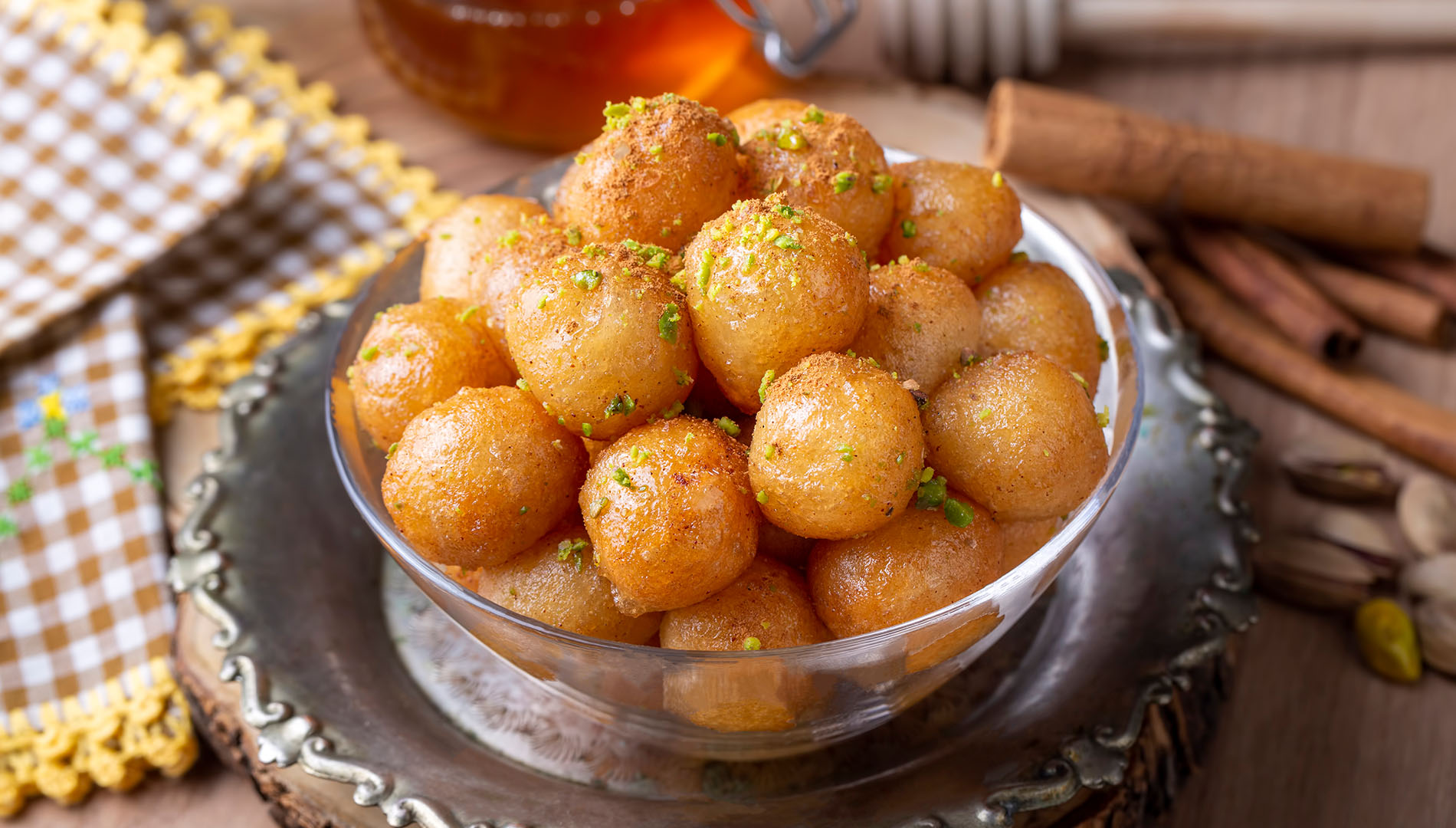Oman holds its own despite being surrounded by glitzy and glamorous neighboring nations. Those who visit are treated to spectacular natural beauty, legendary Bedouin hospitality and a cuisine that’s influenced by Oman’s rich trading past.
Beyond just sustenance, food is at the heart of every celebration, bringing the community together.
Rice, protein and a variety of spices are the mainstays of Omani cuisine, but to a discerning palate, there are subtle variations that are a delight to taste and discover.
Luqaimat
Crunchy, sweet and sticky, Luqaimat are little balls of deliciousness. Made from a batter of dough, yeast and yogurt, the bite-sized balls are fried in hot oil until the outer layer turns golden brown.
Once done, they are tossed with thick date syrup or honey and finished with a sprinkling of sesame seeds. Warm and crisp on the outside, they are pillowy soft inside.
These Arabic doughnuts are widely available, but don’t miss the ones served at the Bait Al Luban, which also offers sweeping views of the Muttrah Corniche.
Halwa
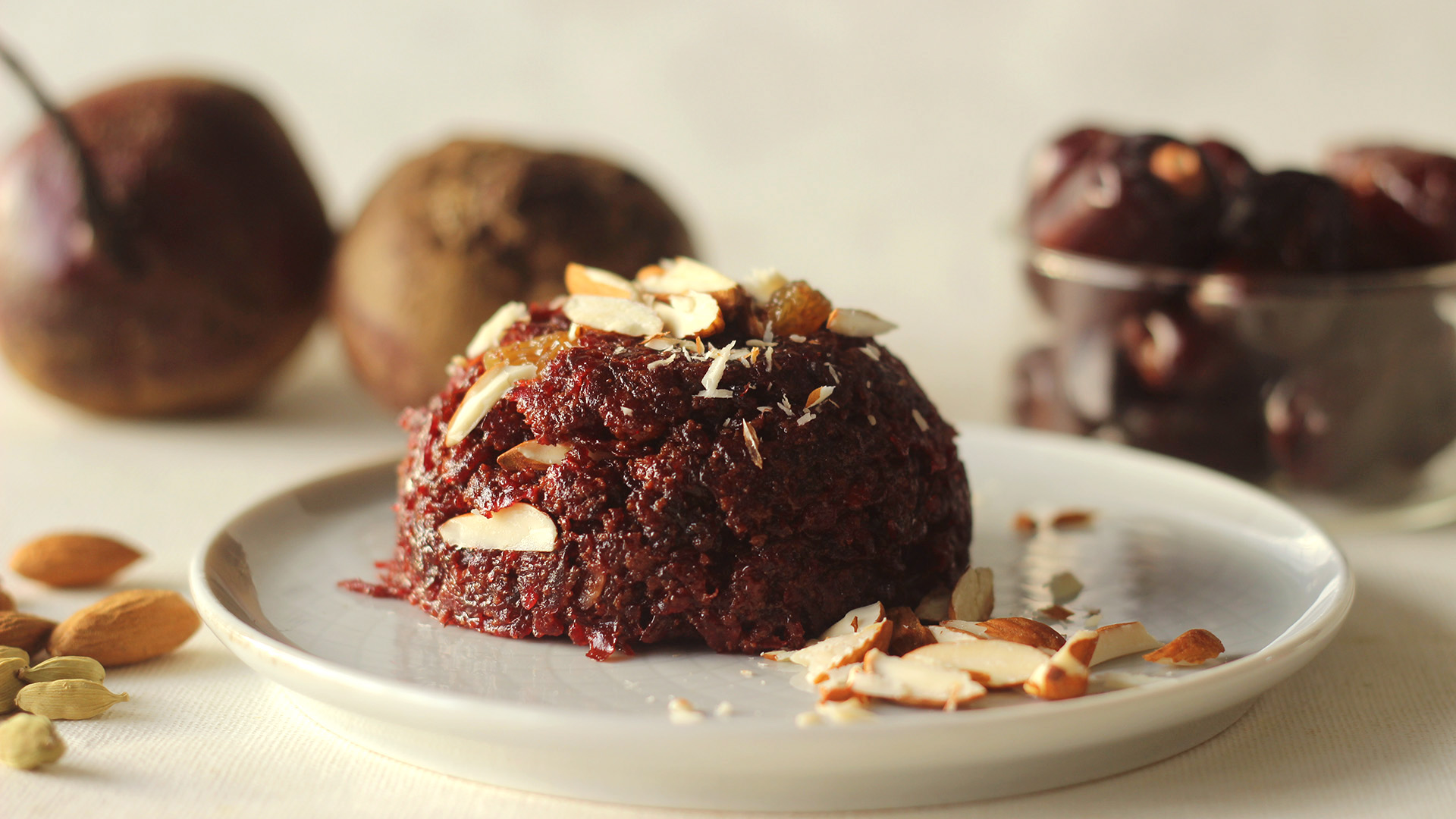
Deep brown, almost black, in color and speckled with slivered almonds or pistachios, the gelatinous Omani halwa might look menacing, but one bite of this iconic sweet will leave you hankering for more.
No two halwa recipes are the same, but largely, cornstarch, sugar, ghee, saffron, rosewater and nuts go into making it.
Traditionally, it’s made in large quantities in copper vats with cooks continuously stirring the mixture with long wooden spoons. Try and get your hands on the halwa made by the Omani Halwa Factory, a favorite of the royal family.
Thareed
Paper-thin regag bread, vegetables and meat make up this popular dinner staple. Simmered in a meat broth, the bread soaks in all the flavors. Thareed is eaten throughout the year and is a staple during the holy month of Ramadan as it’s easy to digest after a long day of fasting.
Qabuli

This is Oman’s spin on the popular rice dish, biryani. The long-grain rice and protein are cooked in broth with chickpeas, raisins and a medley of whole spices, such as cardamom, cloves and cinnamon. The special Omani spice mix adds extra oomph.
At the atmospheric Rozna restaurant, modeled after a traditional Omani fort, in addition to chicken, meat or fish, the dish can be ordered with dried shrimp or dried shark.
Shuwa
Fall-off-the-bone meat dish shuwa is eaten on special occasions, particularly on Eid. Made with lamb, goat, sheep or even camel, the hunk of meat is slathered with a special spice mix, wrapped in banana leaves and cooked in an underground pit fired with wood.
Slow-cooked for more than 24 hours, the perfectly tenderized meat is served on a bed of saffron-infused long-grain rice. The best way to eat it is to go at it with your fingers.
If you’re eager to try it, but it’s nowhere near Eid, then head to the Sheraton Oman Hotel, where every Friday a special feast featuring traditional dishes, including the shuwa, is laid out.
Mishkak
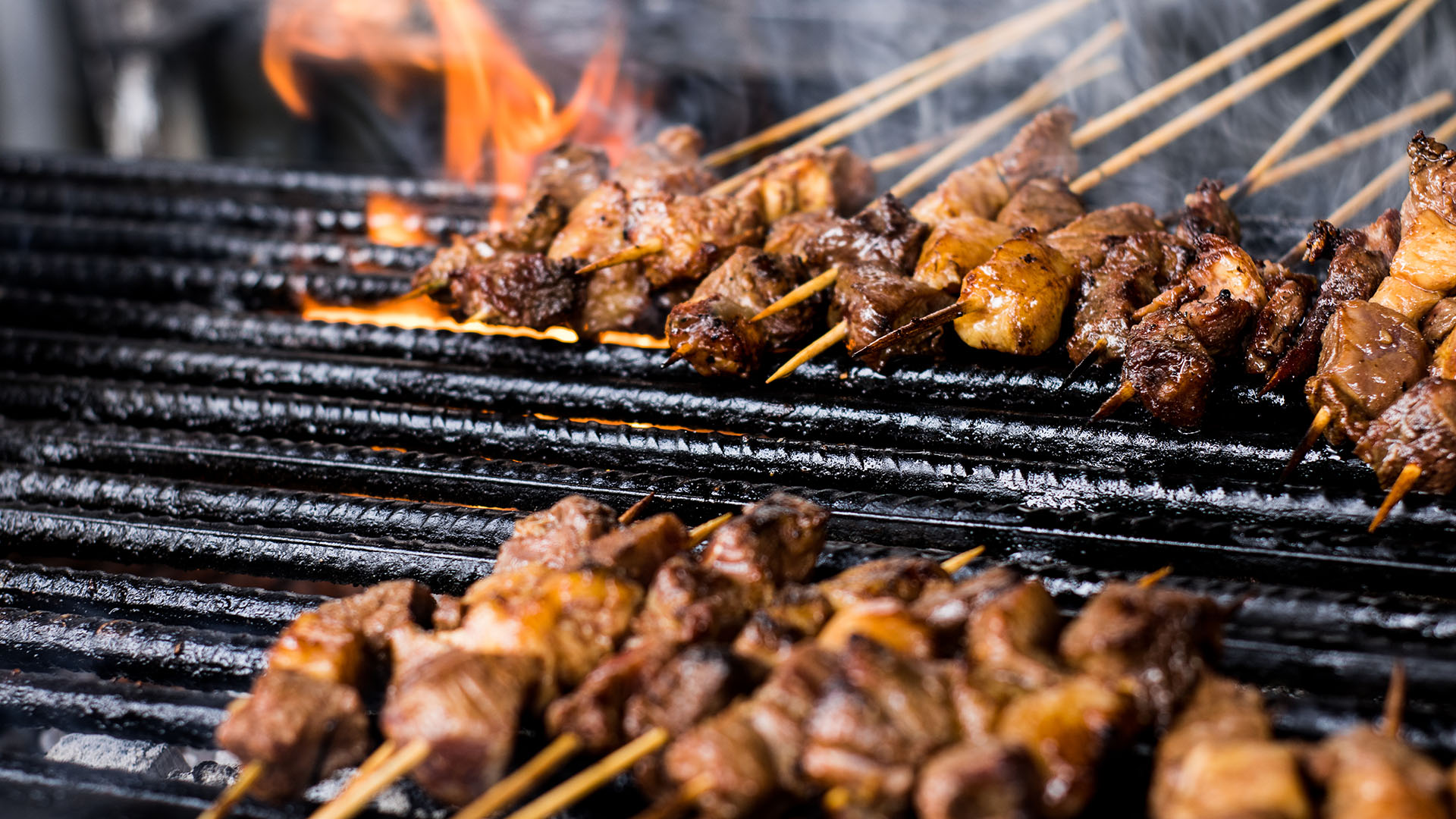
You are likely to smell mishkak even before you lay eyes on it. This much loved Omani street food dish consists of succulent pieces of red meat, chicken or squid grilled to perfection.
Marinated in yogurt, tangy tamarind sauce and spices, the skewered dish is eaten as is or along with a portion of salad and fries drizzled with gooey cheese. It’s best sampled on the streets fresh off the grill.
Harees
Don’t be fooled by the appearance of this glutinous, porridgelike dish. Harees is the ultimate comfort food and is part of Ramadan and other celebratory feasts. Soaked broken wheat, red meat or chicken, and spices are brought to a simmer and left to cook for several hours.
It’s eaten with a dollop of ghee and fried onions. Serving dishes that fuse the traditional with the modern, Ubhar is a good place to tuck into a warm bowl of harees.
Madhbi
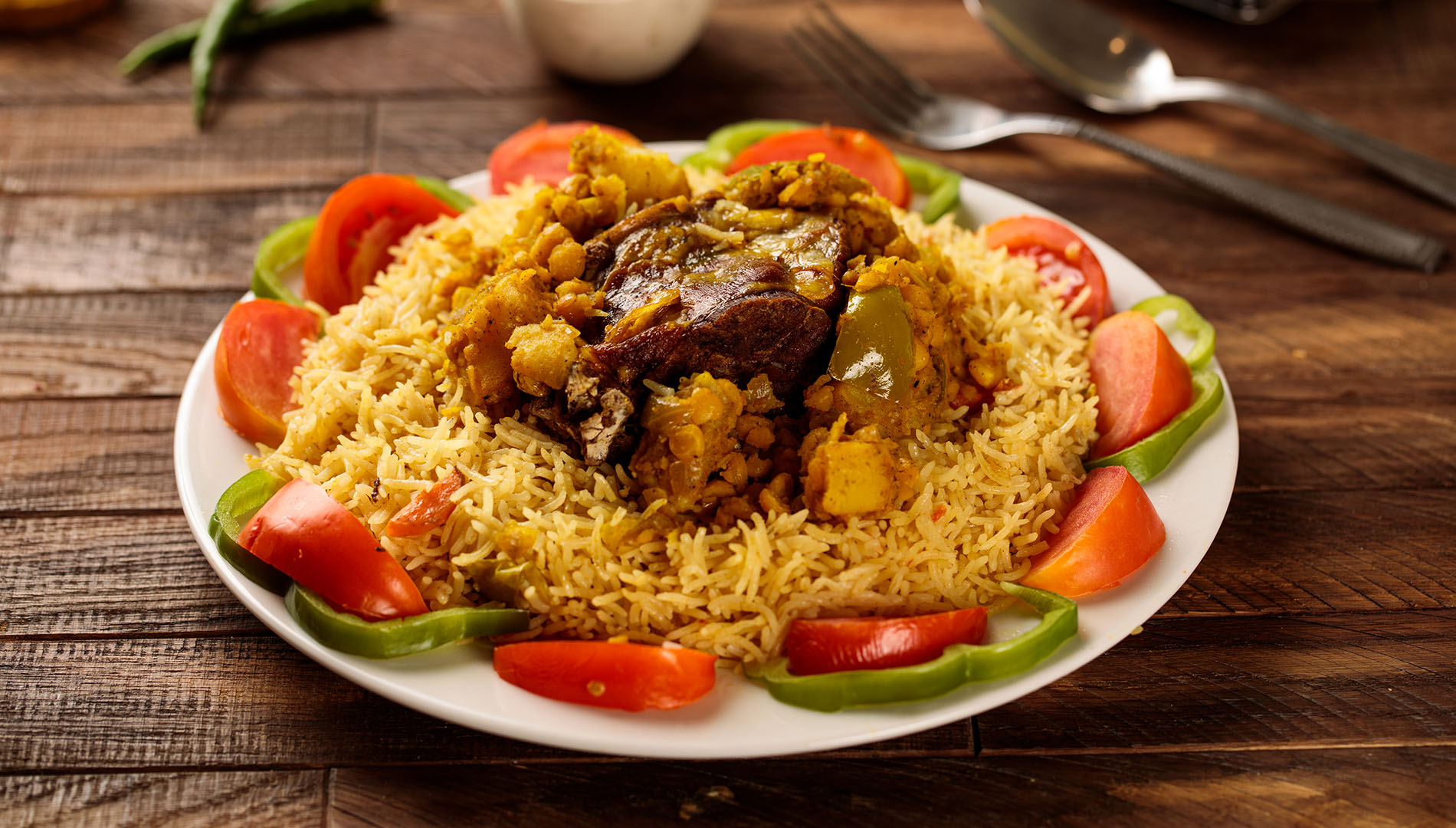
The Dhofar Governorate draws people for its lush foliage and pleasant weather in the summer months, as well for the traditional dish madhbi. A local barbecue of sorts, pieces of chicken, meat or fish are seared on burning stones. It’s common to find communal madhbi stations where you can take your protein and have it grilled.
The best way to relish madhbi is with a local Omani family, but if that isn’t a possibility, head to the Rozna restaurant.
Madrouba
Fragrant spices like cumin, cardamom and cloves along with tender chicken and rice are slow cooked to a porridgelike consistency in this Omani classic.
Served hot with a spoon of ghee (clarified butter) and crispy fried onions, the dish tastes like sunshine on a cold winter day. Try this at the Al Angham restaurant, where it comes flavored with rosewater.
Majboos
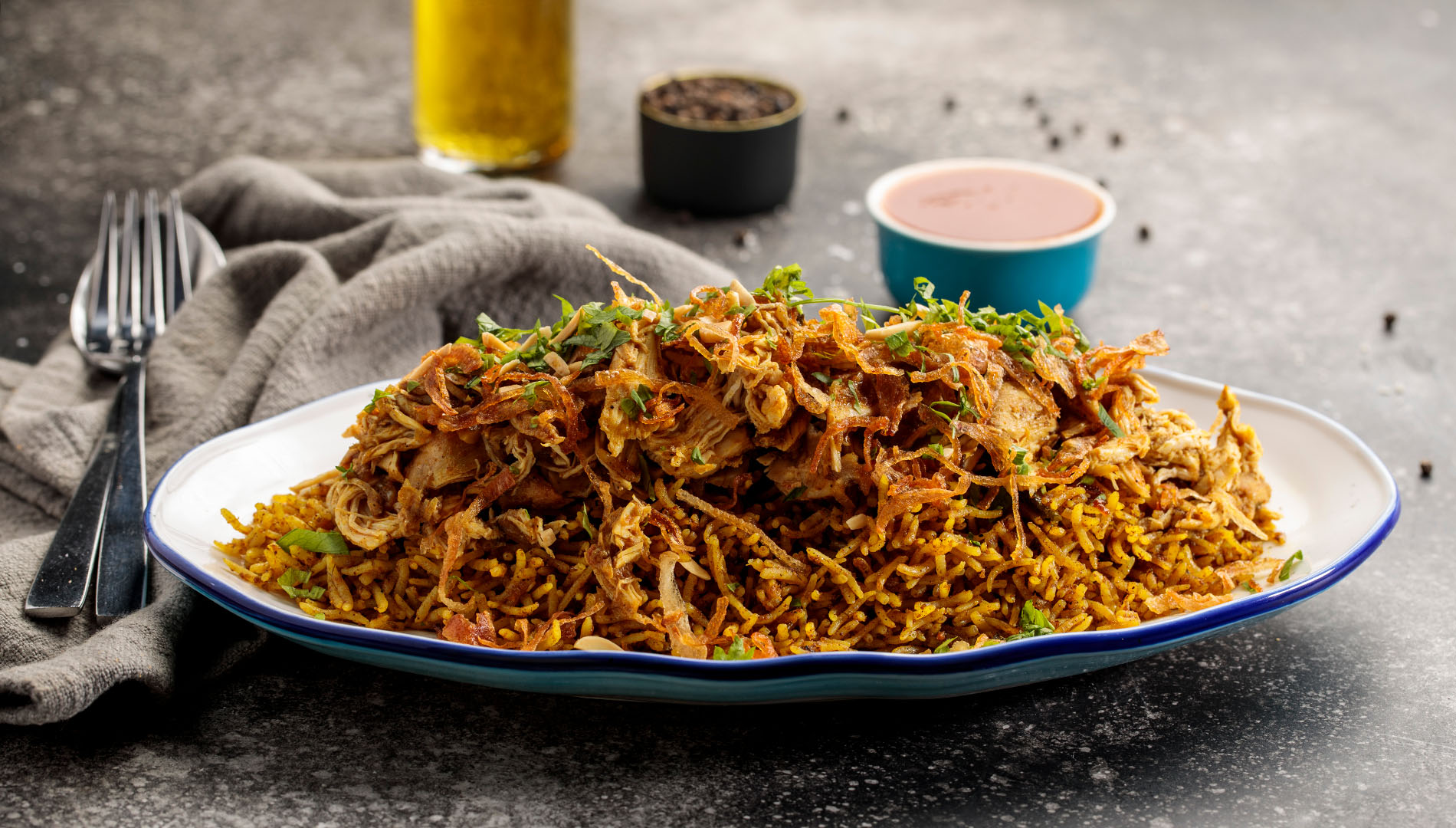
Similar to the kabsa of Saudi Arabia, majboos is a dish made of long-grain basmati rice, chicken and aromatic spices that add depth of flavor. The rice and chicken are cooked separately and then assembled to create this simple yet flavorful dish.
During celebrations and festivals, it’s served on large communal platters garnished with fried onions, sweet raisins and nuts.
Paplou
A hearty turmeric infused fish soup, paplou is an ode to the influences of the many neighboring tribes on Omani cuisine. This simple dish delivers big on flavor and is like comfort in a bowl.
Made with king fish or tuna, the star ingredient is dried Omani lemon that adds zing and tartness to the soupy dish. At the beautiful Al Angham restaurant in Muscat, find it listed on the menu as marqat pablo.
